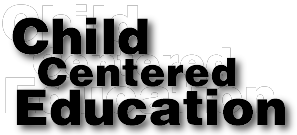 Summary/Analysis
Summary/Analysis
Even opponents of a more flexible, individualized, and "child-centered" approach to education cannot deny its theoretical success. Educational traditionalist E.D. Hirsch acknowledges that "even if all children in a grade need to reach some of the basic goals in arithmetic, reading, and writing, the best means for leading them to those goals will vary from student to student" (p. 11). In other words, teaching approaches which recognize the different learning styles inherent in all children, and strive to meet the individual needs of each child separately would, in theory, be the most educationally sound.
Unfortunately, in practice, and considering the reality of the American educational bureaucracy, a universal "child-centered" approach to teaching is not such a forgone conclusion. Individualized education is extremely expensive. Child-centered teaching styles generally work well for children with learning disabilities and gifted students. However, they have not been applied to ALL children, primarily because of the lack of funds - particularly in the public school system - for this kind of universal individualized education.
There are a few public schools throughout the U.S., primarily charter schools, that have adopted some form of the Rudolph Steiner method. Of course, there has been much controversy over these schools which span the country from New York to San Diego. Mareva Brown of the Sacramento Bee Newspaper describes the main source of controversy at Oak Ridge Elementary, "one of only a handful of public schools in the country to at least partially embrace the notion of Waldorf education." Before the implementation of more individualized teaching approaches can occur in American public schools, there first has to be agreement that these strategies are actually effective. Our examination of existing child-centered approaches currently in use for primarily special needs students, suggests that there are many valuable aspects in child-centered education that would benefit every child.
Finding a way to provide this individualized education for all of America's school children, not just those at the ends of the learning spectrum, is not easy. However, Waldorf schools serve as good examples of how the strengths of child-centered education can be implemented effectively for children of all abilities. Aspects of child centered education including smaller teacher-student ratios, greater appreciation of talents, consistent assessment of development, and resources dedicated to their needs can be integrated into current educational approaches. With improved funding and implementation strategies, ALL American children could realize the benefits of more individualized education that SOME children receive currently.
Government 375: Educational Reform and Ideology

